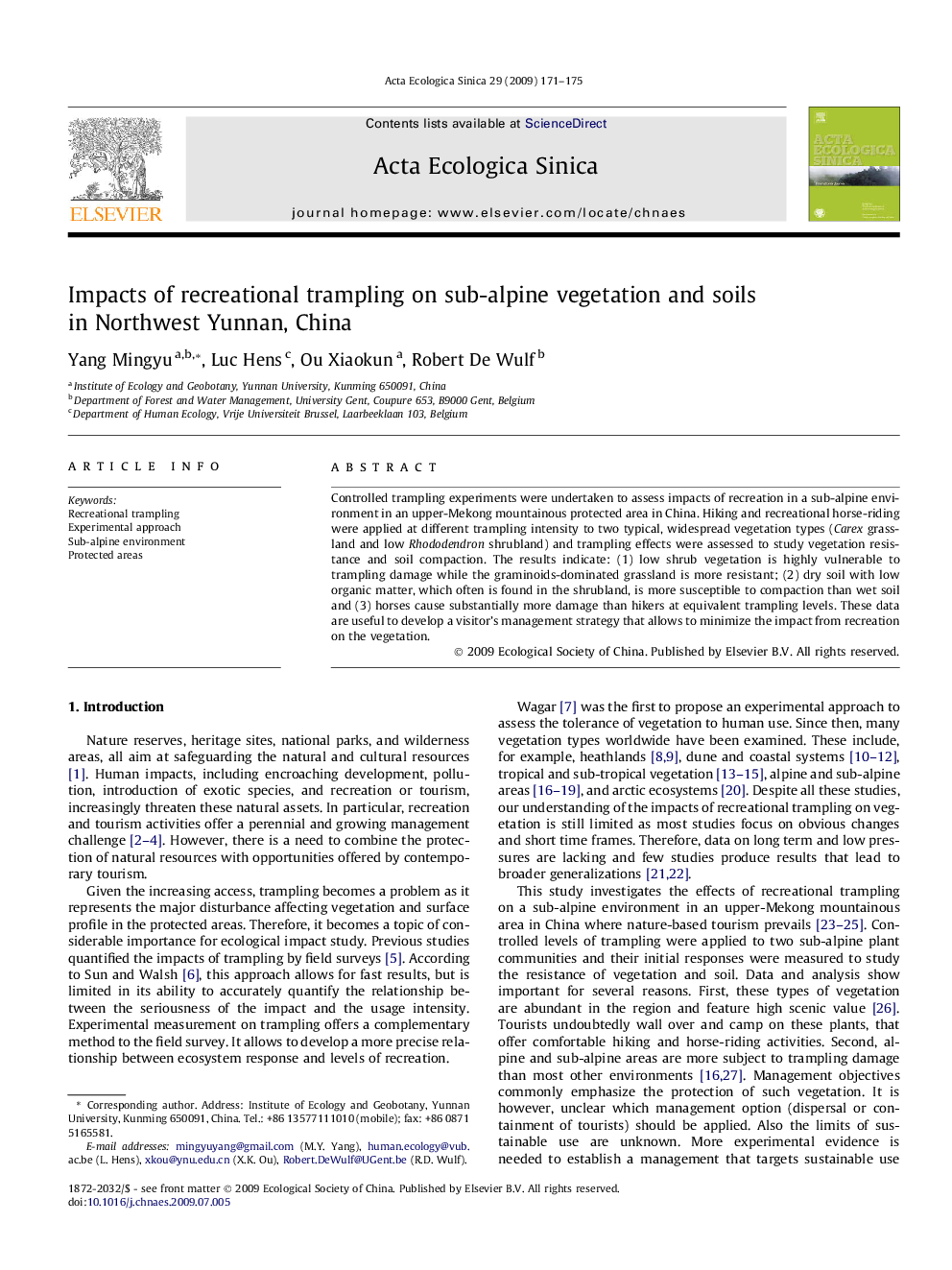| Article ID | Journal | Published Year | Pages | File Type |
|---|---|---|---|---|
| 4380211 | Acta Ecologica Sinica | 2009 | 5 Pages |
Controlled trampling experiments were undertaken to assess impacts of recreation in a sub-alpine environment in an upper-Mekong mountainous protected area in China. Hiking and recreational horse-riding were applied at different trampling intensity to two typical, widespread vegetation types (Carex grassland and low Rhododendron shrubland) and trampling effects were assessed to study vegetation resistance and soil compaction. The results indicate: (1) low shrub vegetation is highly vulnerable to trampling damage while the graminoids-dominated grassland is more resistant; (2) dry soil with low organic matter, which often is found in the shrubland, is more susceptible to compaction than wet soil and (3) horses cause substantially more damage than hikers at equivalent trampling levels. These data are useful to develop a visitor’s management strategy that allows to minimize the impact from recreation on the vegetation.
